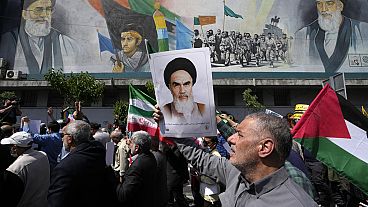Pope Francis, is shaking up Vatican city. The pontiff is set to confirm 15 new Cardinals this weekend. It is his selection which is making waves as
Pope Francis, is shaking up Vatican city. The pontiff is set to confirm 15 new Cardinals this weekend. It is his selection which is making waves as he is shifting the emphasis away from Rome. Though European Cardinals remain in the majority, they are losing influence. It comes soon after the pontiff lashed out at top Roman Catholic officials denouncing their ‘lust for power’. During his Christmas greeting last year, which got a lukewarm response from the current Cardinals, he said they were ‘hypocritical’ and ‘had forgotten the Lord’. It appears the Pope is aiming to make room for some new ideas with cardinals from across the globe. But what does this mean for the Catholic Church itself?
Pope Francis calls for greater efficiency and transparency in Church's central administration. http://t.co/4HpB4URwJ6pic.twitter.com/Hu19cf1R1R
— The Straits Times (@STcom) February 12, 2015
What does the Council of Cardinals do?
The scarlet-clad ‘princes of the Church’ also known as the College of Cardinals are charged with advising the Pope when he convenes a Consistory. They step out of his shadows and into the limelight on his death or resignation in order to elect a successor. They have no real power, except during the period between popes known as sede vacante. Originally their role was devised as a sort of bridge between the theological and governing roles of the hierarchy of the Church. In the case of Pope Francis, the new Cardinals will assist him to enact the reforms he began last year. This includes a revamp of the papal civil service as well as the scandal-ridden Vatican bank. They will also take on the sensitive task of addressing sex abuse which has plagued the Catholic church for over a decade. Though Francis has made reform his calling card, it appears he may have his work cut out for him after reports that the German ‘Bishop of Bling’ who resigned last year over lavish spending claims has found a new position in the Church.
College of Cardinals briefed on progress of Curial reform http://t.co/RezLQBJZDjpic.twitter.com/N0XBtMPwas
— The Catholic Herald (@CatholicHerald) February 12, 2015
Shifting the balance away from Europe
Pope Francis is himself the first non-European to be elected to head the Catholic Church in 1,300 years. Just two years into the job his nominations for Cardinals come as a seismic shift in tradition, marking the most diverse selection the institution has ever seen. Tonga has its first ever Cardinal along with Cape Verde and Myanmar. The US gains no new cardinals while Europe gained just three.
Cardinals to be
1 – Dominique Mamberti, Prefect of the Apostolic Signatura in the Roman Curi.
2 – Manuel José Macário do Nascimento Clemente, Patriarch of Lisbon (Portugal).
3 – Berhaneyesus Demerew Souraphiel, C.M., Ethiopian Catholic Archbishop of Addis Abeba, (Ethiopia)
4 – John Atcherley Dew, Archbishop of Wellington (New Zealand).
5 – Edoardo Menichelli, Archbishop of the Archdiocese of Ancona-Osimo (Italy).
6 – Pierre Nguyên Văn Nhon, Archbishop of the Roman Catholic Archdiocese of Hanoi (Vietnam).
7 – Alberto Suárez Inda, Archbishop of Morelia (Mexico).
8 – Charles Maung Bo, S.D.B., Archbishop of Yangon (Myanmar).
9 – Francis Xavier Kriengsak Kovithavanij, Archbishop of Bangkok (Thailand).
10 – Francesco Montenegro, Archbishop of the Archdiocese of Agrigento (Italy).
11 – Daniel Fernando Sturla Berhouet, S.D.B., Archbishop of Montevideo (Uruguay).
12 – Ricardo Blázquez Pérez, Archbishop of Valladolid (Spain).
13 – José Luis Lacunza Maestrojuán, O.A.R., Bishop of David (Panama).
14 – Arlindo Gomes Furtado, Roman Catholic bishop of the Diocese of Santiago de Cabo Verde (Cape Verde).
15 – Soane Patita Paini Mafi, Roman Catholic Bishop of Tonga (Tonga).
The Head of the Holy See press office said, “The new nominations confirm that the Pope is not bound to the traditions of the “Cardinalatial Sees”. These areas are where bishops would normally become Cardinal automatically.
It also changes the make-up of the Conclave which would nominate Francis’ successor. New Cardinals are named when the current ones turn 80 rendering them ineligible to vote in a papal election. Under the rules set out by Pope Paul VI the College of Electors should have 120 voting age members, however, he himself broke the rule and so has Francis with a total of 125. He is also nominating five cardinal emeriti who, being over 80, won’t be eligible to vote.
The shift away from Europe reflects the change in the numbers of believers from north to south, of 1.2 billion Catholics in the world, two-thirds live outside the West.
What is happening this weekend?
Following two days of closed-door meetings, the new Cardinals will be inducted during a ceremony on Saturday February 14 to be conducted by Pope Francis. This is where they will get their red hat or ‘galero’. The scarlet colour denotes blood, infering that the wearer is ready to die for his faith. In typical frugal fashion Pope Francis told his new Cardinals not to waste money on parties to celebrate their new positions and not let their red hats go to their heads.
The event typically draws thousands of pilgrims to the Vatican and the Apostollic Palace is traditionally opened for visitors.


